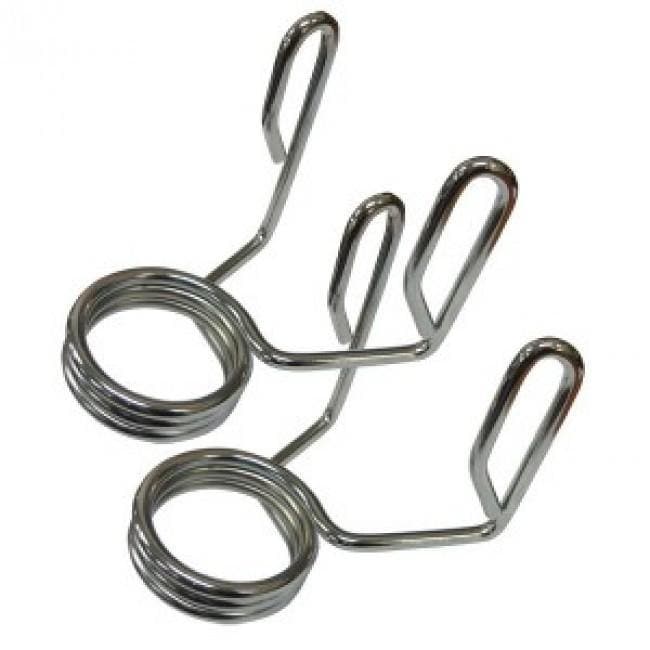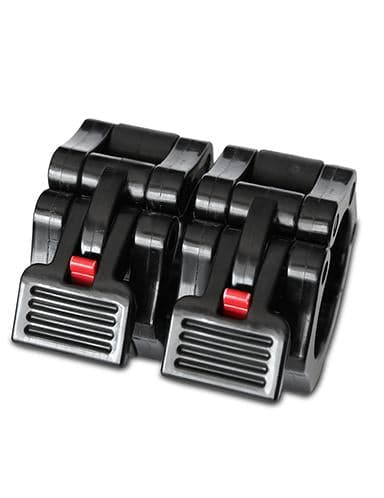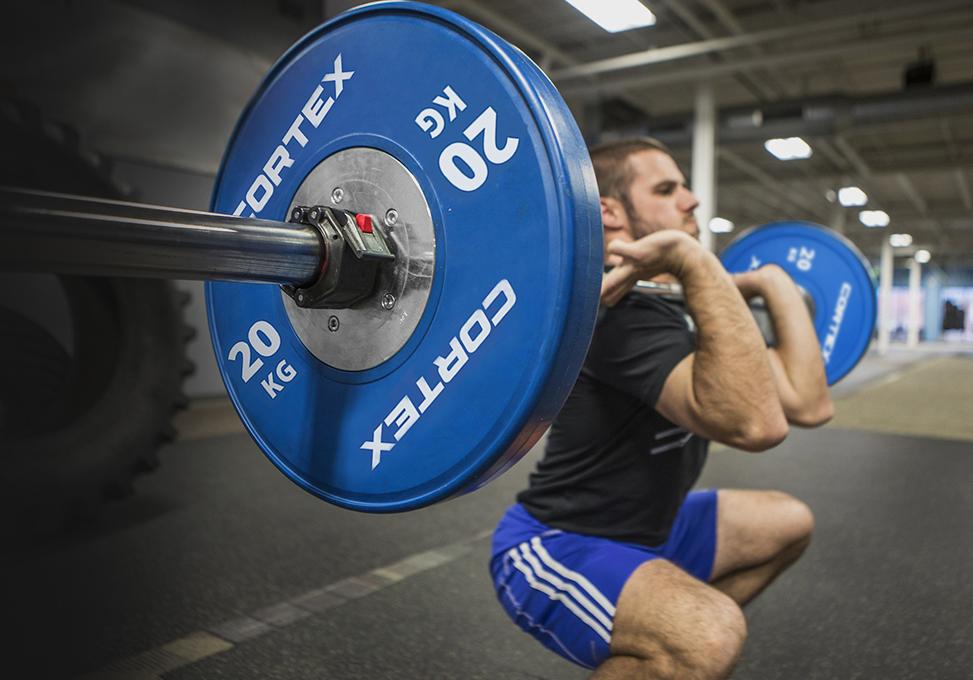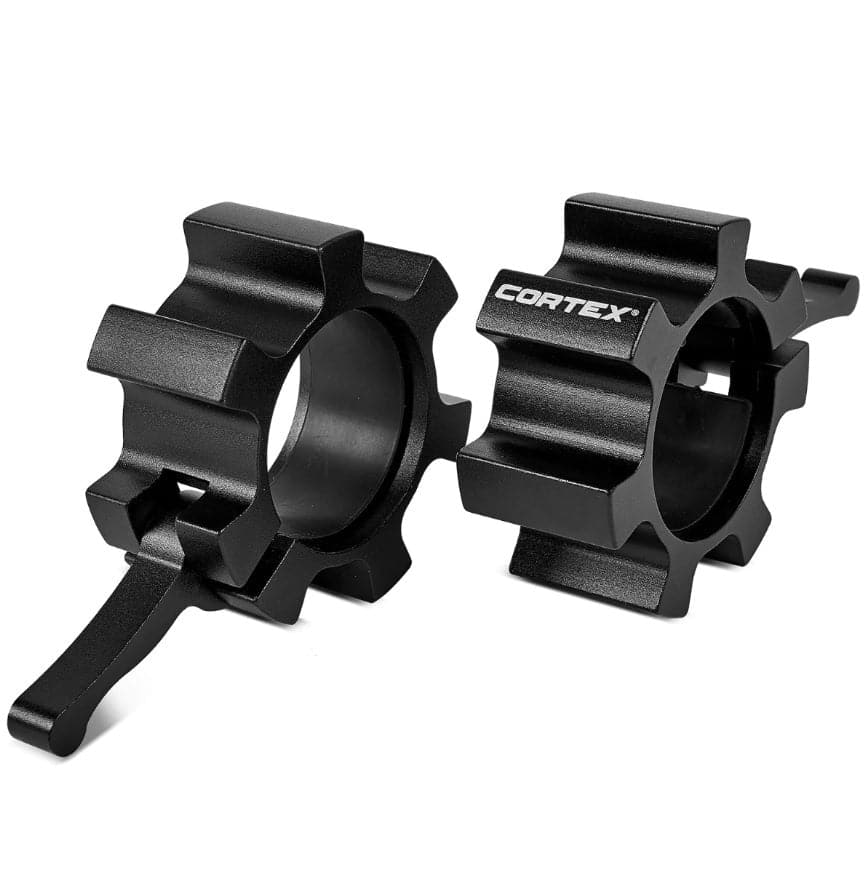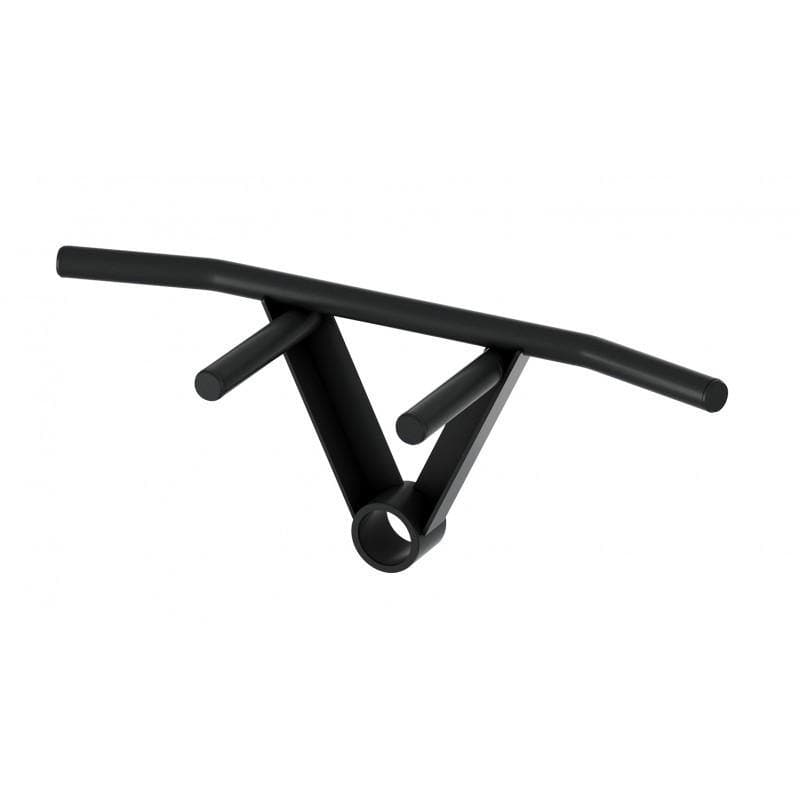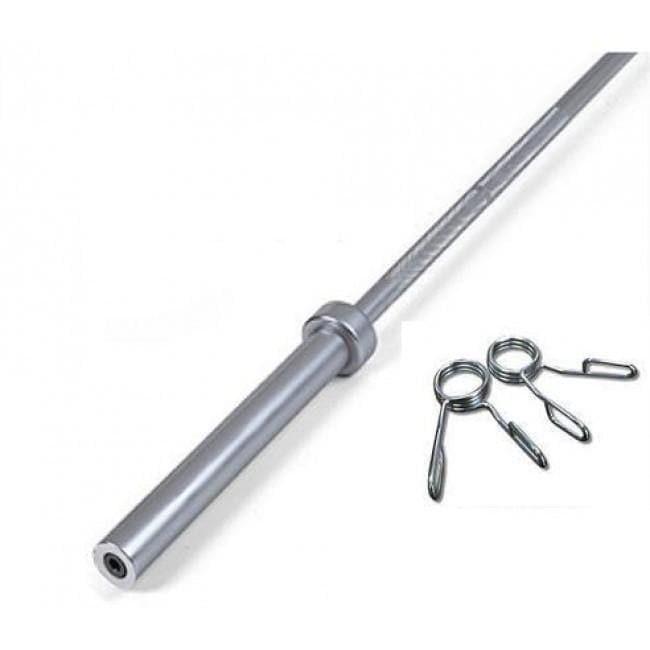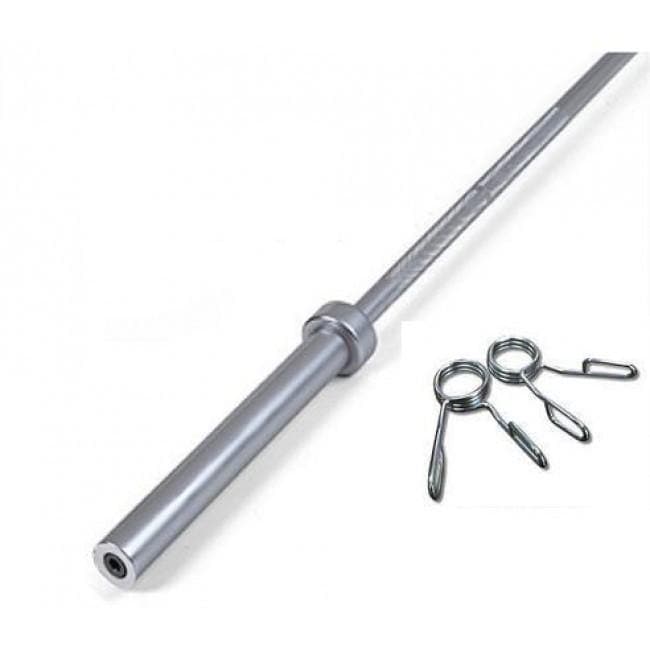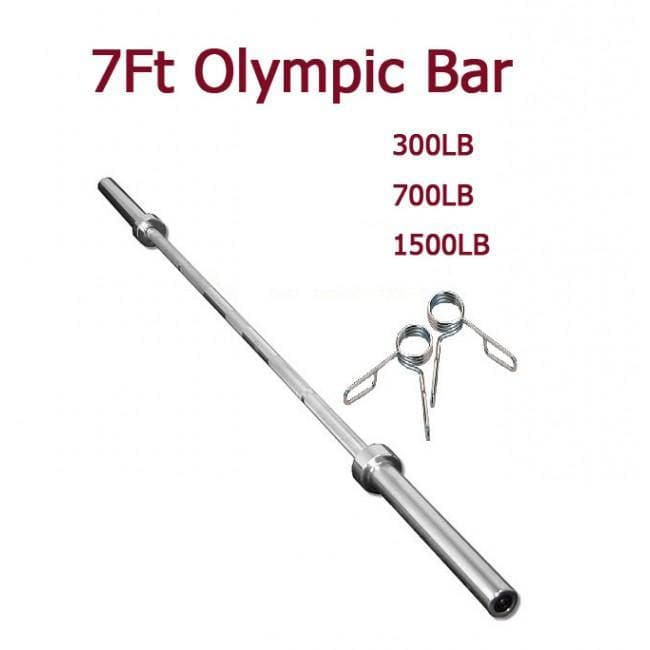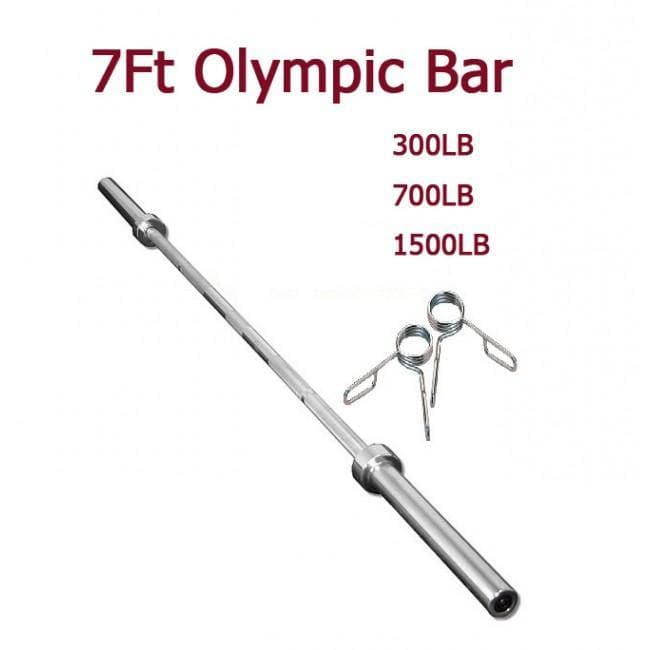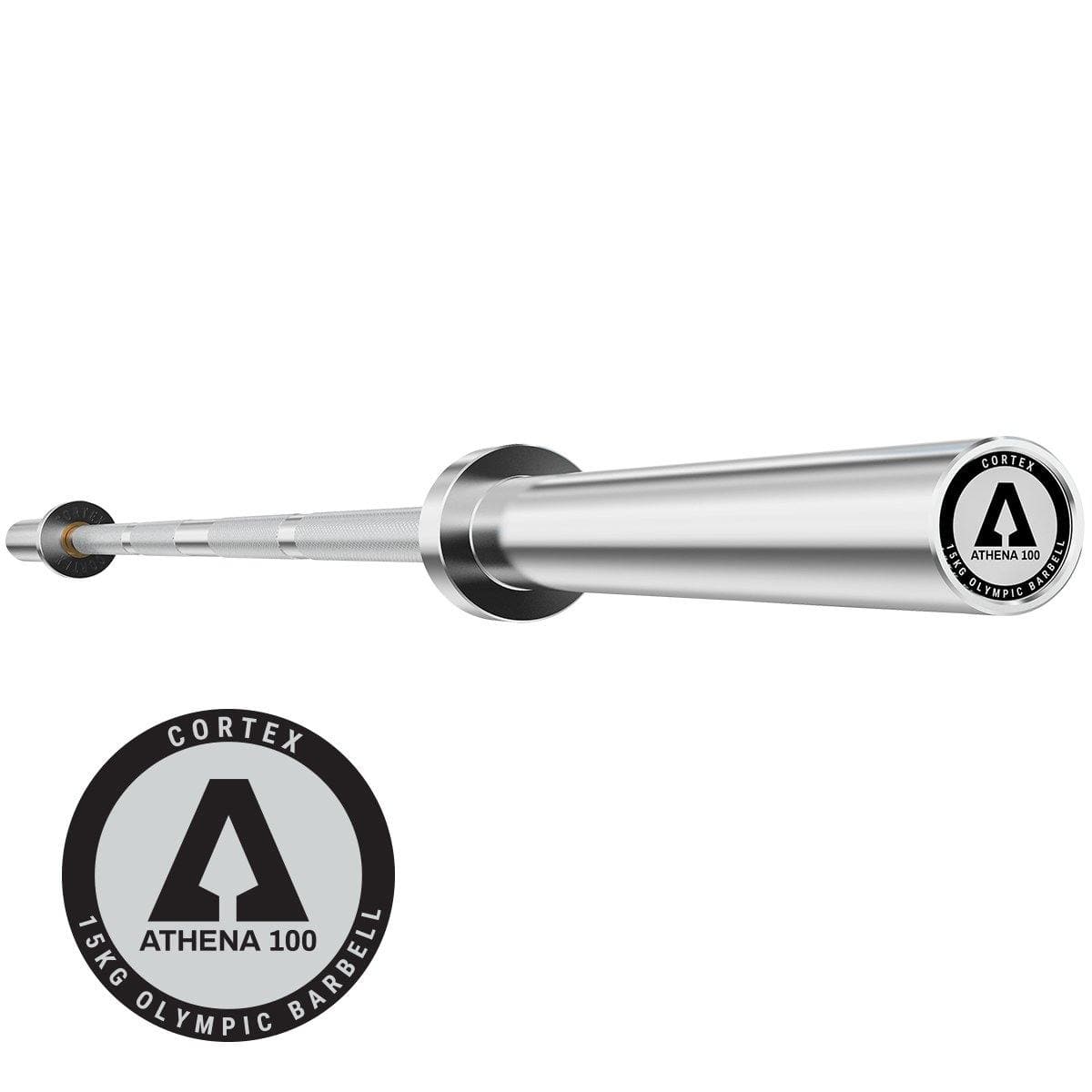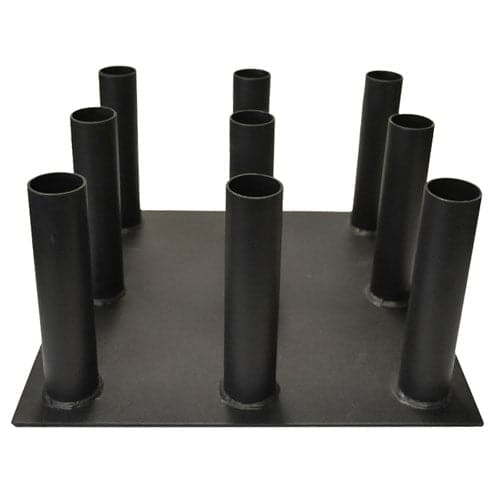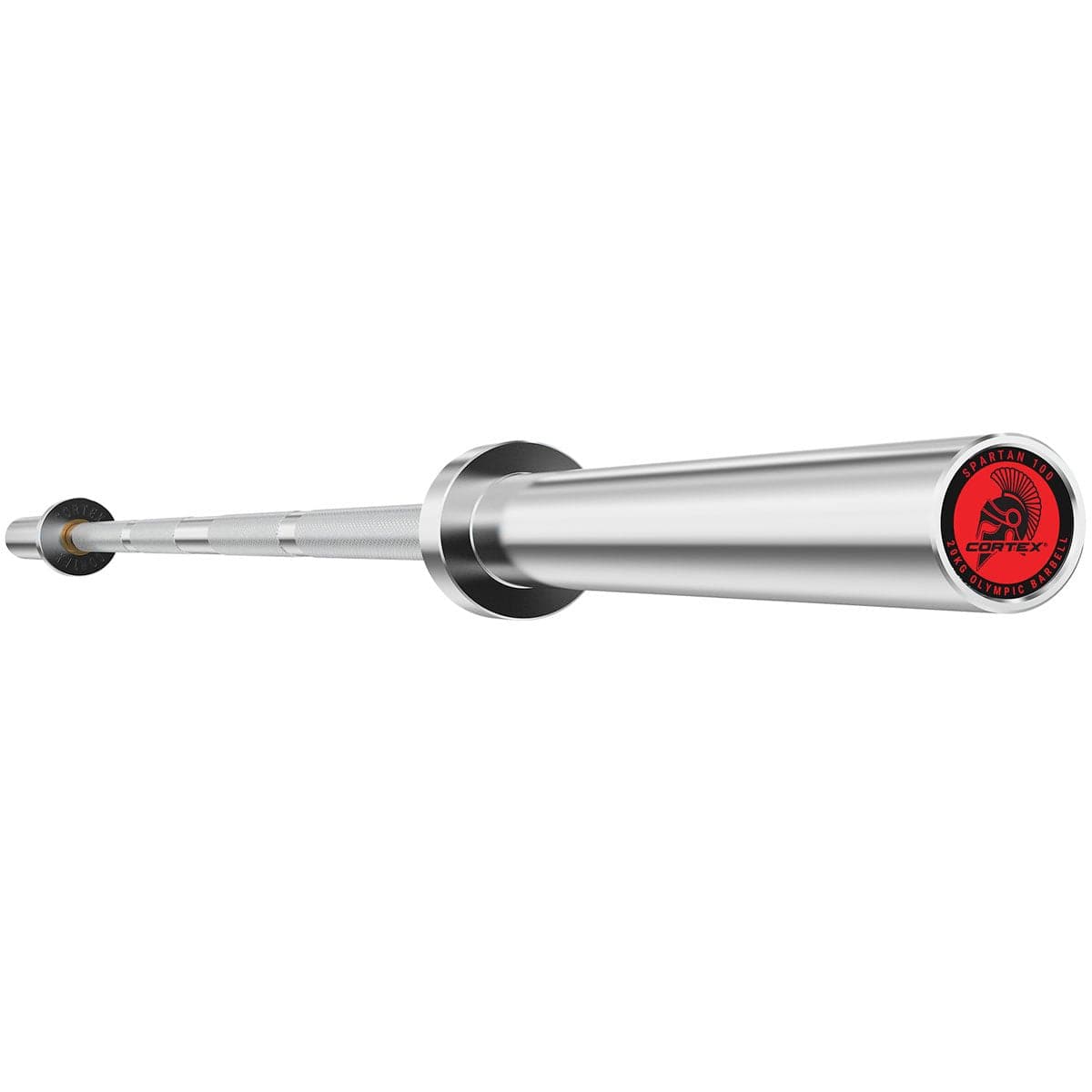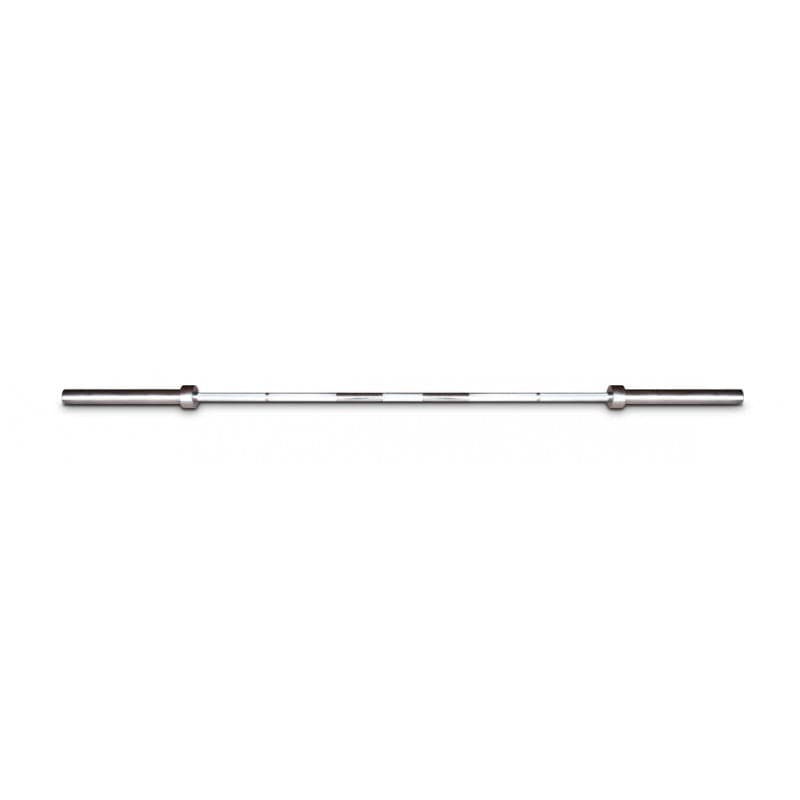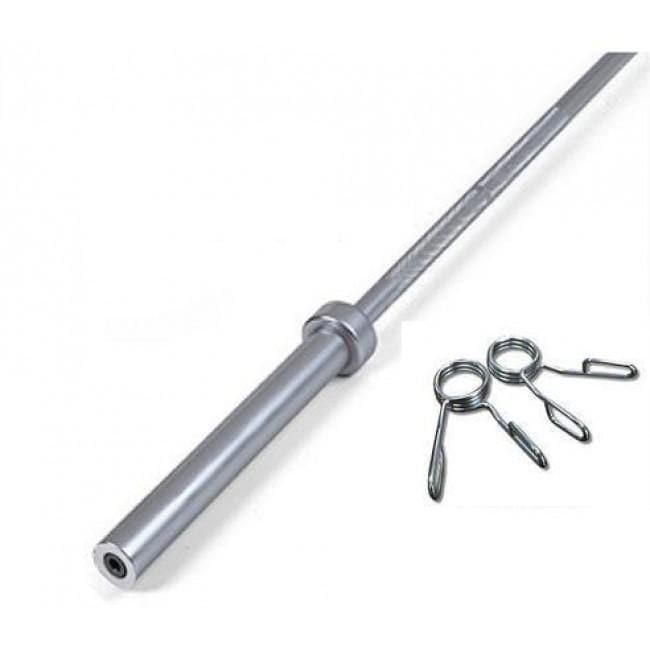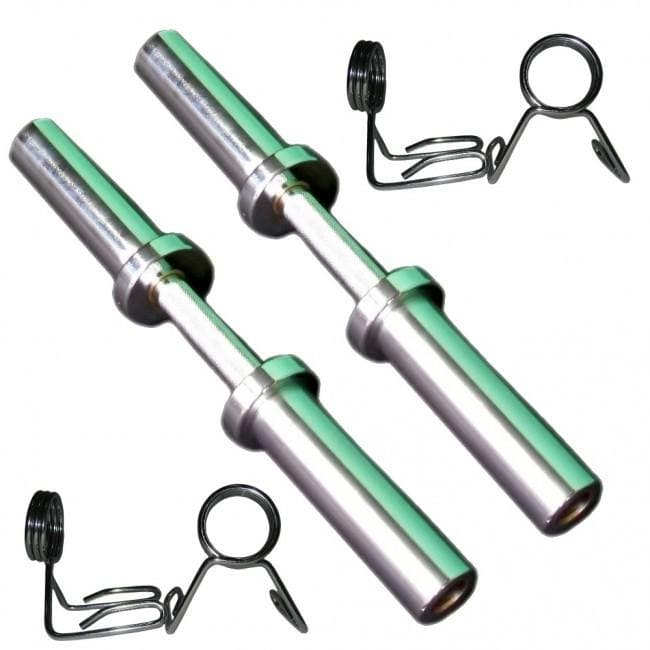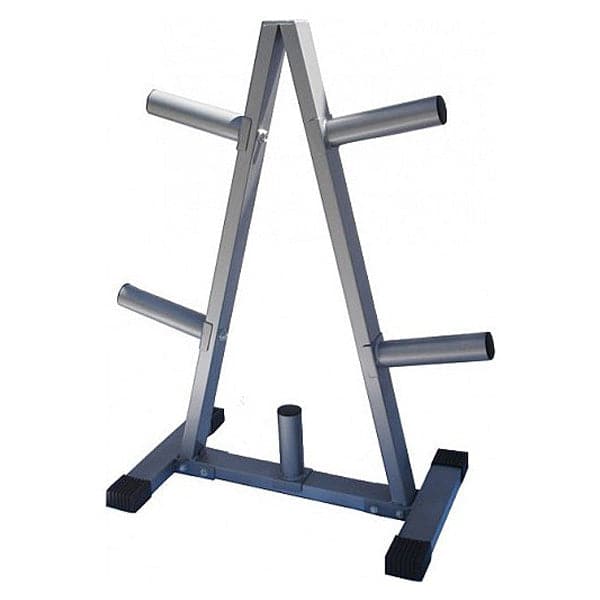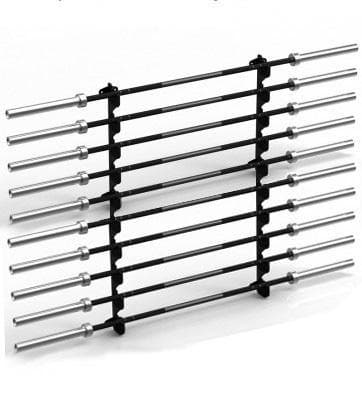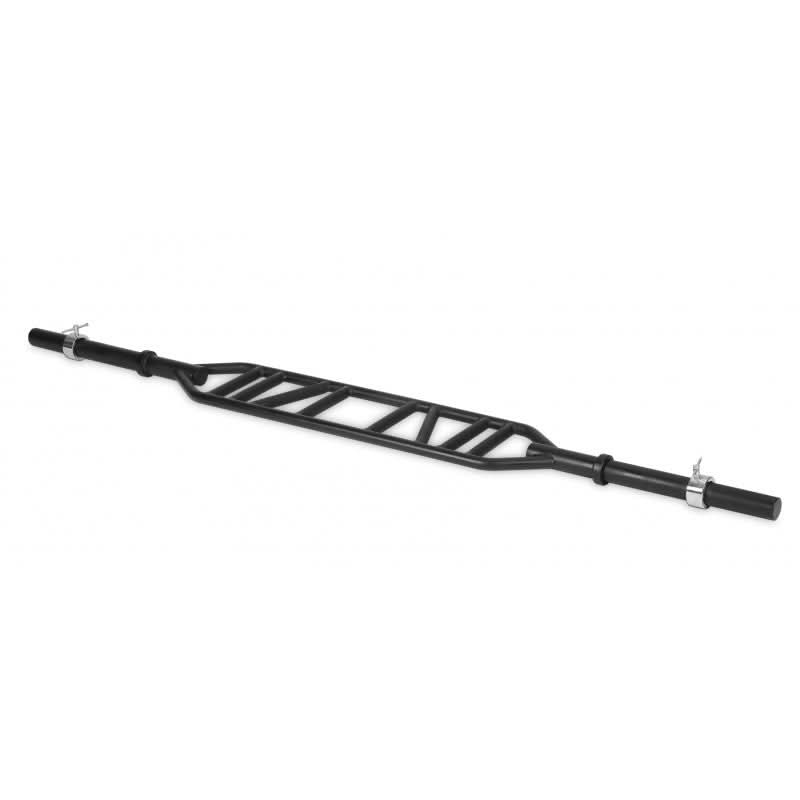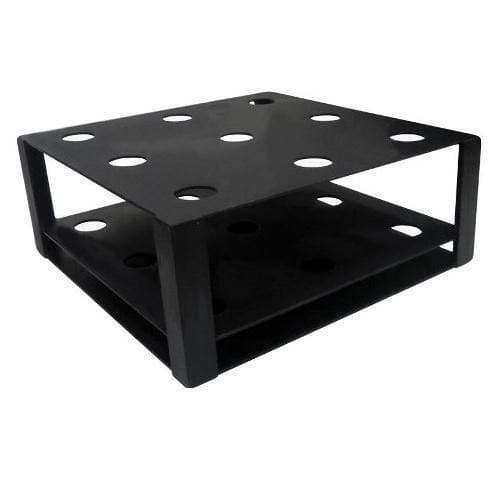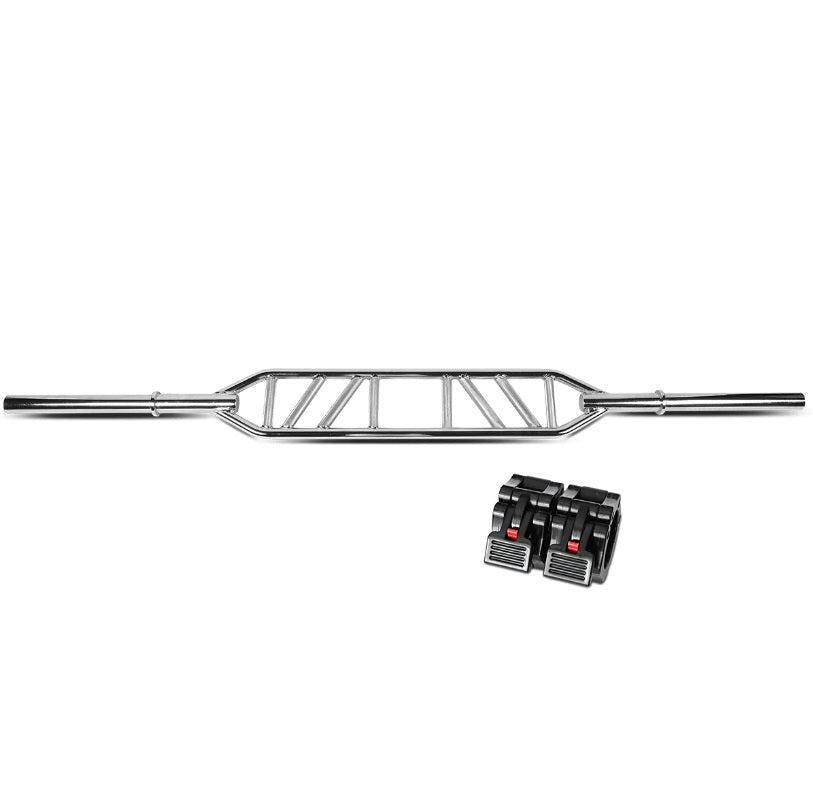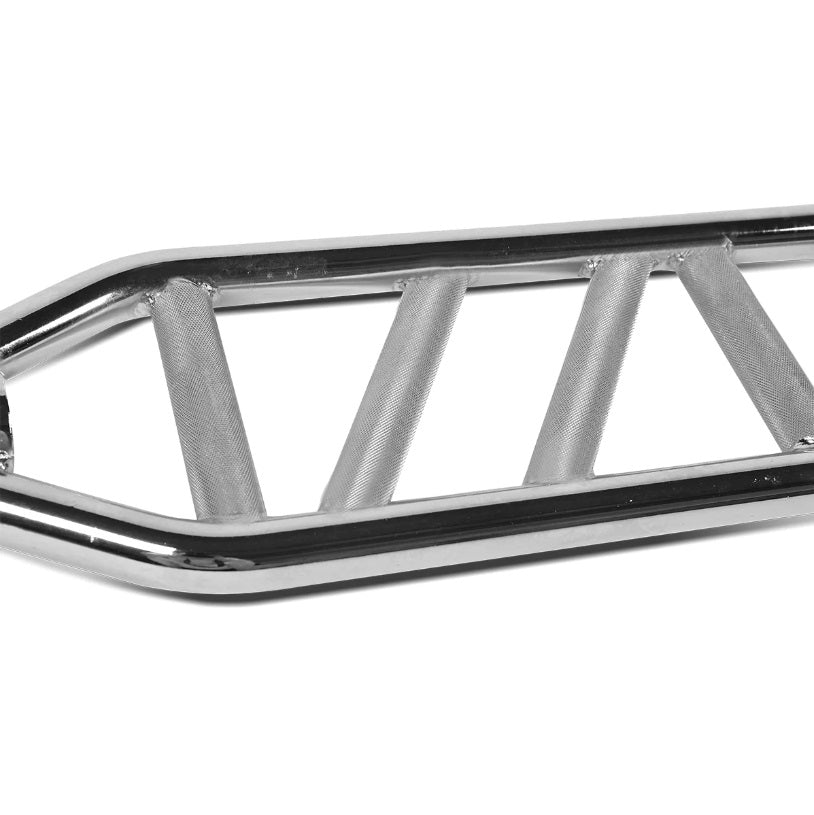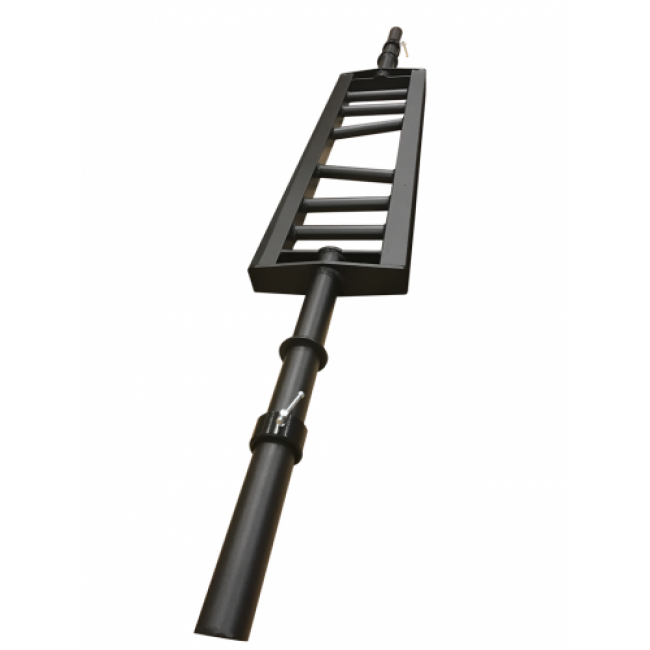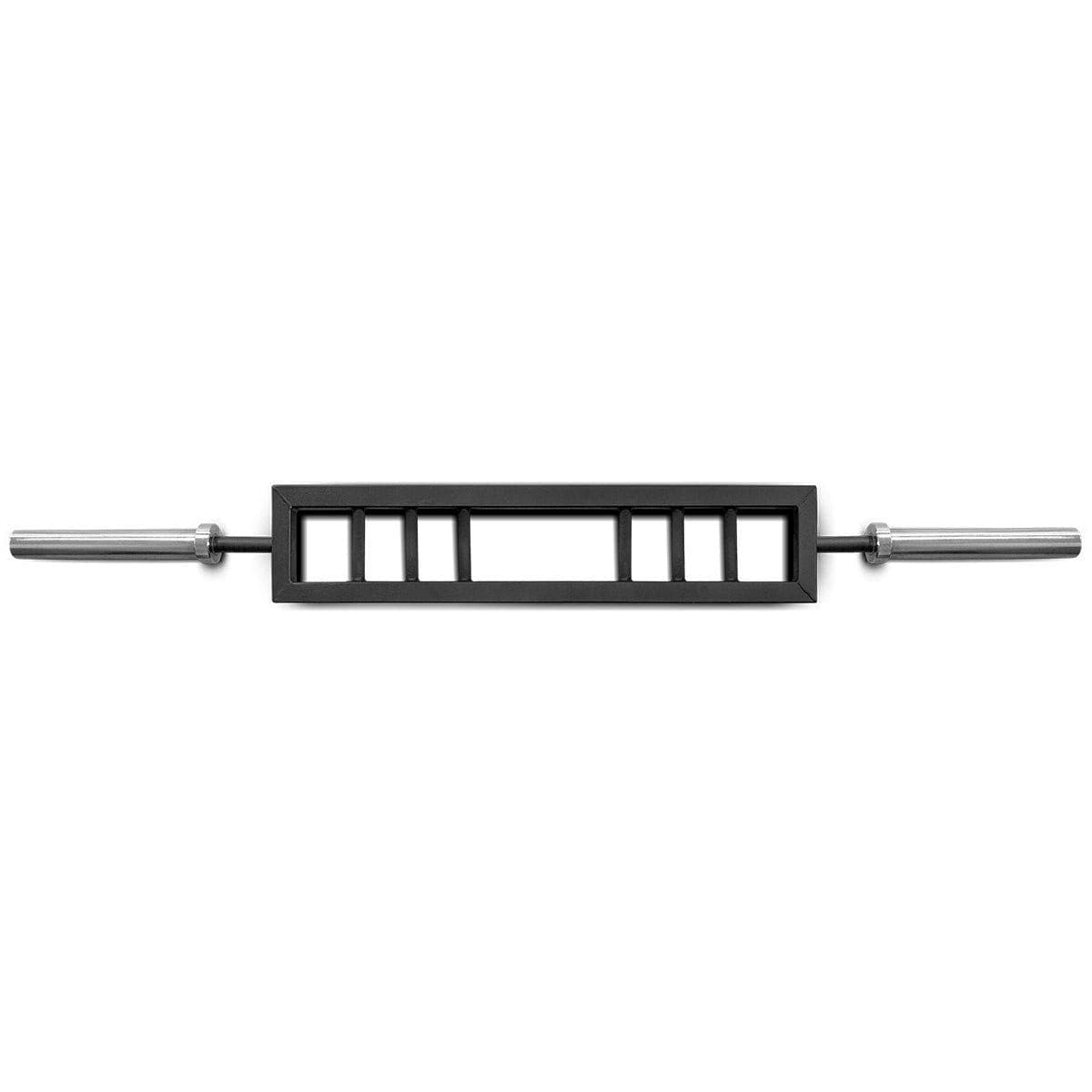Olympic Bars and Accessories
What are the differences between Olympic weight training bars?
Barbells can be used for a wide variety of exercises, but there are variations between them that make some bars better for certain exercises than others – such as the diameter, knurling, and whip. As the weights get heavier, this will become increasingly more important for the heavier lifts.
Power Bars
Power bars are the most common type of barbell. They are usually 7ft (2.1336m) long and are rigid, stiff bars.
A power bar is considered to be a universal bar and can be used to perform squats, presses, and deadlifts.
Power bars tend to be the most common type of bar you will see in traditional commercial fitness centres.
Some common features of power bars are:
- Stiff steel to help facilitate slow, controlled movements with minimal whip action
- Center knurling to maintain friction on your back when performing squats
- Deep knurling to provide a no-slip grip
- Thicker shaft to be more comfortable for bench presses and squats
- Steel or brass Bushings to allow some spin
- High tensile strength to withstand being slammed on a rack
Deadlift Bars
A deadlift bar is a type of powerlifting bar, but the grip is more narrow in diameter as compared to a traditional power bar.
Deadlift bars also have a more knurling which provides the user with a better grip.
Importantly, a deadlift bar has more whip which allows for the bar to bend more before the weight is lifted from the floor. This requires the user to build more speed at the start of the pull which helps to move bigger weight loads.
If your main goal is to lift more weight from the ground, then you will likely benefit from using a deadlift bar.
Some features of deadlift bars are:
- Thinner than regular bars – most are approximately 27mm thick
- The knurling is more aggressive as compared to power or olympic bars
- The distance between the sleeves is increased and it has a longer overall length
- Made of very strong and elastic spring steel.
Olympic Bars
Olympics weightlifting consists of two types of lifts – the clean and jerk, and the snatch. Both are single, maximum effort lifts.
The goal of Olympic lifting is to test an athlete’s explosive power and technique as opposed to testing their lifting strength. Olympic bars look similar to power bars, except they have sleeves that are built to different standards since they are repeatedly dropped.
These bars also come with smooth, fast-rotating sleeves with needle bearings, that enable the lifter to get under the bar quickly and without releasing their grip.
Some features of Olympic bars are:
- More flexible steel to facilitate the whip
- No center knurling so it doesn’t scratch the front of your neck during cleans
- Soft or medium knurling on training bars so the bar can slide during your transition from the pull to the catch.
- 910mm spaced ring markings
- Thinner shaft for a good pulling grip
- Roller bearings so you can transition your wrists to catch the bar in rack position on your shoulders.
We recommend Olympic bars for those looking to lift heavier weights or who want to create a CrossFit type gym in their home
